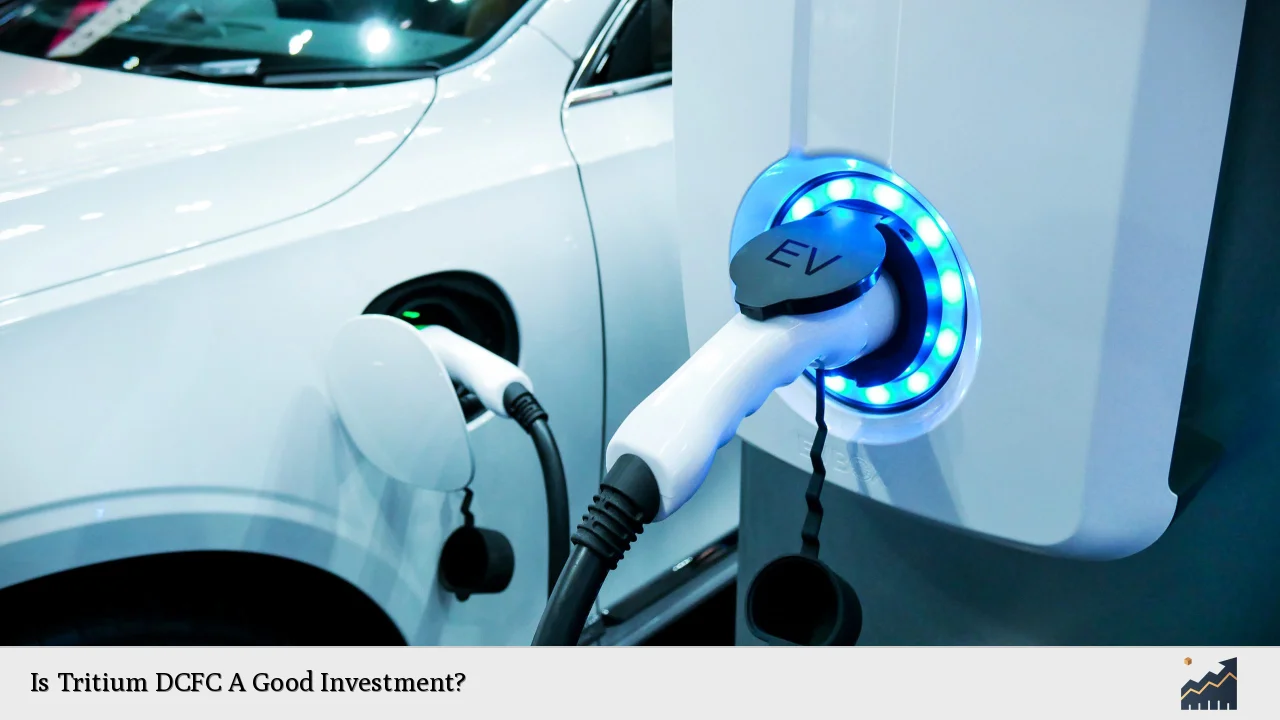Tritium DCFC Limited, a leading manufacturer of direct current fast chargers for electric vehicles (EVs), has garnered significant attention from investors due to the growing demand for EV infrastructure. However, assessing whether Tritium DCFC (NASDAQ: DCFC) is a good investment involves a thorough examination of its financial health, market position, and future prospects. This analysis will delve into current market trends, implementation strategies, risk considerations, regulatory aspects, and the future outlook for Tritium DCFC.
| Key Concept | Description/Impact |
|---|---|
| Market Demand for EV Charging | The global shift towards electric vehicles is increasing the demand for reliable charging infrastructure, positioning Tritium favorably in a growing market. |
| Financial Performance | Tritium reported a revenue of $184.54 million in 2023 but incurred a net loss of $121.37 million, indicating challenges in achieving profitability. |
| Strategic Initiatives | The company is implementing measures to improve operational efficiency and aims for profitability by 2024 through consolidation and cost reduction. |
| Market Volatility | Tritium’s stock has exhibited high volatility, with a recent price prediction suggesting potential declines in value over the next year. |
| Regulatory Environment | As a key player in the EV sector, Tritium must navigate various regulatory frameworks that can impact its operations and profitability. |
| Future Growth Potential | With projections indicating substantial growth in EV adoption and infrastructure needs, Tritium could benefit significantly if it successfully executes its strategic plans. |
Market Analysis and Trends
The electric vehicle market is experiencing rapid growth, driven by increasing consumer demand for sustainable transportation solutions. According to industry reports, global EV sales are projected to reach 30 million units by 2030, significantly boosting the need for charging infrastructure. Tritium is strategically positioned to capitalize on this trend as it specializes in high-speed DC fast chargers.
Current Market Statistics
- Revenue Growth: Tritium’s revenue increased by 115% year-over-year, reaching $184.54 million in 2023.
- Market Position: Tritium holds approximately 10% of the global DC fast charger market share.
- Stock Performance: The stock has shown considerable volatility with a current trading price around $3.64, reflecting concerns about its financial stability.
Implementation Strategies
Tritium has laid out several strategic initiatives aimed at enhancing its operational efficiency and achieving profitability:
- Consolidation of Manufacturing: The company is consolidating its manufacturing operations to reduce costs and improve production efficiency. This includes closing its Brisbane facility and focusing on its plant in Lebanon, Tennessee.
- Cost Reduction Measures: Tritium plans to lower selling, general, and administrative expenses by streamlining operations and reducing headcount where necessary.
- Focus on Profitability: The company has set ambitious targets to achieve profitability by 2024 through these strategic initiatives while maintaining competitive pricing in the EV charging market.
Risk Considerations
Investing in Tritium DCFC comes with inherent risks that potential investors should carefully consider:
- Financial Instability: The company reported a net loss of $121.37 million in 2023. Its negative cash flow from operations raises concerns about its ability to sustain operations without additional funding.
- High Volatility: The stock has been characterized as speculative with significant price fluctuations. Recent analysis indicates that it may be overvalued at current levels.
- Market Competition: As the EV charging market expands, Tritium faces increasing competition from established players and new entrants that could impact its market share and pricing power.
Regulatory Aspects
The regulatory landscape for electric vehicles and charging infrastructure is evolving rapidly. Tritium must comply with various regulations that govern environmental standards, safety protocols, and financial disclosures:
- Government Incentives: Various governments are providing incentives for EV adoption and charging infrastructure development. This can positively impact Tritium’s sales but also requires compliance with specific regulatory frameworks.
- Sustainability Regulations: As sustainability becomes a focal point for consumers and regulators alike, Tritium must ensure that its manufacturing processes align with environmental standards to maintain competitiveness.
Future Outlook
The future outlook for Tritium DCFC appears cautiously optimistic if the company can successfully navigate its current challenges:
- Growth Projections: Analysts forecast substantial growth in revenue as demand for EVs continues to rise. By 2027, revenue estimates suggest potential growth to approximately $1.13 billion.
- Profitability Goals: If Tritium can execute its strategic plans effectively, the goal of achieving profitability by 2024 could enhance investor confidence and potentially lead to stock price appreciation.
- Market Positioning: As one of the few dedicated manufacturers of DC fast chargers globally, Tritium’s position may strengthen as it continues to innovate and expand its product offerings.
Frequently Asked Questions About Is Tritium DCFC A Good Investment?
- What is Tritium DCFC’s primary business focus?
Tritium specializes in manufacturing direct current fast chargers for electric vehicles. - How has Tritium’s financial performance been recently?
The company reported significant revenue growth but also substantial net losses, indicating financial challenges. - What are the main risks associated with investing in Tritium?
Key risks include financial instability, high stock volatility, and intense market competition. - What steps is Tritium taking to achieve profitability?
The company is consolidating manufacturing operations and reducing costs while aiming for operational efficiency. - How does government regulation impact Tritium?
Regulatory frameworks can provide incentives for EV infrastructure but also impose compliance requirements that affect operations. - What is the future outlook for Tritium DCFC?
If successful in executing its strategies, Tritium could see significant revenue growth and potentially achieve profitability by 2024. - Is now a good time to invest in Tritium DCFC?
This depends on individual risk tolerance; potential investors should weigh current financial instability against future growth prospects. - Where can I find more information about investing in Tritium?
Investors should consult financial analysts’ reports, market analysis platforms, and regulatory filings for detailed insights.
In conclusion, while Tritium DCFC presents opportunities aligned with the burgeoning electric vehicle market, potential investors must approach with caution due to its financial instability and competitive landscape. Conducting thorough due diligence is essential before making investment decisions.

